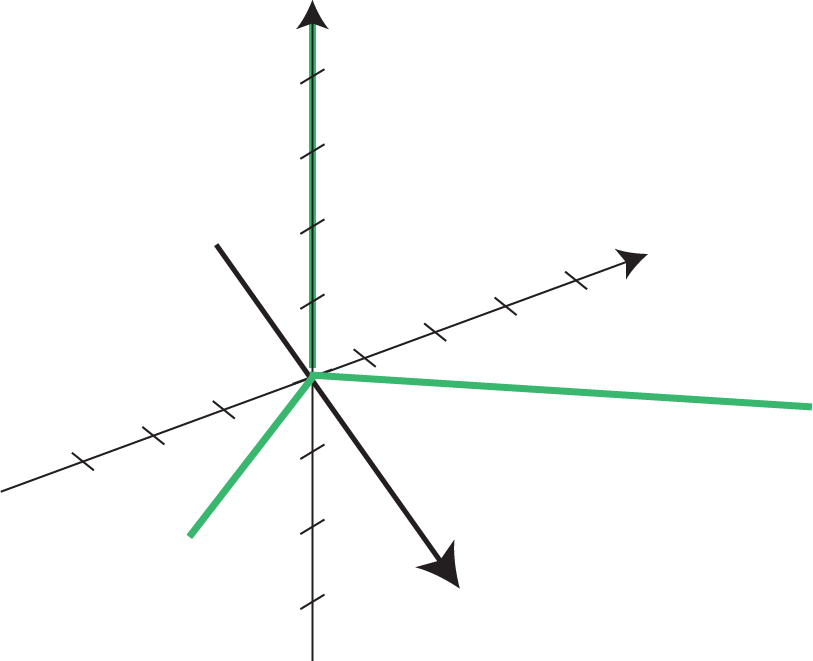The Gram Schmidt calculator utilizes the orthonormalization process to the columns of a matrix or a set of vectors to transform vectors into an orthogonal or orthonormal basis. The orthogonal basis calculator determines orthonormalized sets of vectors in step calculations within a second.
What is Gram Schmidt Process?
The procedure for ortho-normalizing a set of vectors in an inner product space is known as Gram Schmidt Process.
It takes into account two vectors and generates the same number of orthonormal vectors that are parallel to each other. This process is applicable with the help of Gram Schmidt process calculator which serves as an orthogonal and orthonormal basis.
Orthogonal and Orthonormal Vectors:
"If there are two vectors perpendicular to each other, they are known as orthogonal vectors".
"If two vector's dot product is equal to one and their lengths are both one then these vectors are known as orthonormal vectors".
So to find the dot product and length of vectors use the orthonormal basis calculator. To obtain the orthonormal basis, each vector must be normalized by dividing it by its magnitude.
Two vectors are orthogonal if their dot product is zero. So, suppose two vectors Where U indicates the orthonormal and V indicates the original vector if $$ \vec{U} \cdot \vec{V} $$ is equal to zero then this will said to be an orthonormal vector.
This vector is the same as the perpendicular vector on the x and y planes. Our Gram Schmidt calculator turns the set of vectors into an orthonormal basis.
Set of Vectors:
The orthogonal matrix calculator is a way to find the orthonormal vectors of independent vectors in three-dimensional space. The diagrams below are considered to be important for understanding when we come to finding vectors in the three-dimensional space in which:
Diagram 1:
The first figure shows the linear independence of vectors.

Diagram 2:
It shows the orthonormalized set of vectors by the orthonormal basis of independence vectors.

How To Calculate Gram Schmidt? - An Example
Perform the gram Schmidt process on the following sequence of vectors:
- V1 = (1,9)
- V2 = (7,4)
$$ \ V_1 = \begin{bmatrix} 1 \\ 9 \\ \end{bmatrix} \ , V_2 = \begin{bmatrix} 7 \\ 4 \\ \end{bmatrix} \ $$
Solution:
Step # 1:
According to the Gram-Schmidt process formula:
$$ \vec{u_k} = \vec{v_k} - \Sigma_{j-1}^\text{k-1} \ proj_\vec{uj} \ (\vec{v_k}) \ $$
Where:
$$ \ proj_\vec{uj} \ (\vec{v_k}) = \frac{ \vec{u_j} \cdot \vec{v_k}}{|{\vec{u_j}}|^2} \vec{u_j} \ \text{is a vector projection} $$
$$ \text{The normalized vector is} \ \vec{e_k} = \frac{ \vec{u_k}}{|{\vec{u_k}}|} $$
Step # 2:
$$ \vec{u_1} \ = \ \vec{v_1} \ = \ \begin{bmatrix} 1 \\ 9 \\ \end{bmatrix} $$
$$ \vec{u_1} \ = \ \vec{v_1} \ = \ \begin{bmatrix} 0.11 \\ 0.99 \\ \end{bmatrix} $$
Step # 3:
Calculate Vector Projection:
$$ proj_\vec{u_1} \ (\vec{v_2}) \ = \begin{bmatrix} 0.52 \\ 4.72 \\ \end{bmatrix} \\ $$
Now, we calculate the vector subtraction:
$$ \vec{u_2} = \vec{v_2} \ - \ proj_\vec{u_1} \ (\vec{v_2}) \ = \ \begin{bmatrix} 6.48 \\ -0.72 \\ \end{bmatrix} $$
$$ \vec{e_2} = \frac{ \vec{u_2}}{|{\vec{u_2}}|} \ = \ \begin{bmatrix} 0.99 \\ -0.11 \\ \end{bmatrix} $$
So at the end of this example, we evaluate the:
$$ \begin{bmatrix} 0.11 \\ 0.99 \\ \end{bmatrix} \begin{bmatrix} 0.99 \\ -0.11 \\ \end{bmatrix} $$
Steps To Use This Calculator:
It is important to understand the working of this Gram Schmidt Calculator that allows for change of the process that is based on the orthonormal set of vectors on a given matrix and helps to decompose the matrix into two matrixes.
What To Do?
- Adjust the size of vectors
- Put the values according to your setting
- Tap “Calculate”
What To Get?
- The orthonormalize the set of vectors
- Complete evaluation in the form of steps
FAQs:
What Are The Meaning of Vector?
A vector is a quantity that has directions as well as magnitude. It determines the positions of points in space.
What Is The Condition of Orthogonality?
There are two vectors are Orthogonal, if they are perpendicular to each other.
References:
Wikipedia: Gram–Schmidt process, Example, Numerical stability and properties, Via Gaussian elimination, Determinant formula.


